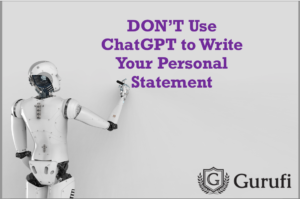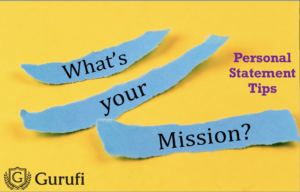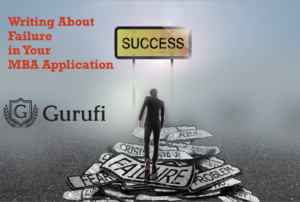Colleges and universities are freaking out because students are beginning to use ChatGPT to do their academic work. A recent poll of Stanford students found that 10% used it to create homework that they turned in without additional alteration. Now, many people are turning to ChatGPT to craft their personal statements.
This is a mistake.
@gurufi_admissions OpenAI’s #ChatGPT is an exciting new technology, but it’s not ready to write your #personalstatement … yet. The results are, frankly, boring. #MBA
OpenAI’s ChatGPT can produce content that is grammatically, syntactically, and structurally sound. BUT, writing a personal statement isn’t a grammar lesson or purely an exercise in basic composition. In short, it needs a human touch and a level of understanding about you, as an applicant, that at present, an AI cannot reproduce. Moreover, personal statements are meant to demonstrate your character, capabilities, and experiences. This implies that they must be particular to you and distinctive. In your voice, from your mind, and reflective of your thoughts and values. Although ChatGPT can create material of a high caliber, it is unable to give it your voice and viewpoint, which is a crucial component of a personal statement.
Second, there are ethical issues with writing your personal statement utilizing ChatGPT. This is an understatement. It is dishonest to have a language model write your personal statement, and if you’re discovered you risk that school telling other schools you’ve applied to. As this video makes plain, schools are investing in high-quality AI-detection software and they are already using them in admissions departments.
Finally, utilizing ChatGPT to draft your personal statement involves some practical issues. Although it might save you time, careful thinking and introspection are still necessary. To create a powerful personal statement, you must reflect deeply on your goals, interests, and accomplishments. If you rely on a computer to do this job for you, your essay can end up being less strong and persuasive.
For more help with your personal statement, check us out at Gurufi.com. Our personal statement editors and consultants have decades of experience helping clients get into top Masters and Ph.D. programs in STEM, humanities, fine arts, and social sciences. Our specialty is helping you craft compelling personal statements that move the needle in your admissions process! For questions, shoot us an email at service@gurufi.com. Check us out on Facebook, Twitter, and LinkedIn.
#personalstatementtips, #collegeadmissions, #writingtips, #collegeapplication, #collegeessay, #collegeprep, #writingadvice, #studentlife, #highschool, #education, #collegebound, #admissionessay, #studenttips, #studygram, #collegeadmissiontips, #writingcommunity, #success, #collegeadvice, #applicationessay, #motivation, #writingprocess, #personaldevelopment, #admissions, #writinghelp, and #applicationprocess.






